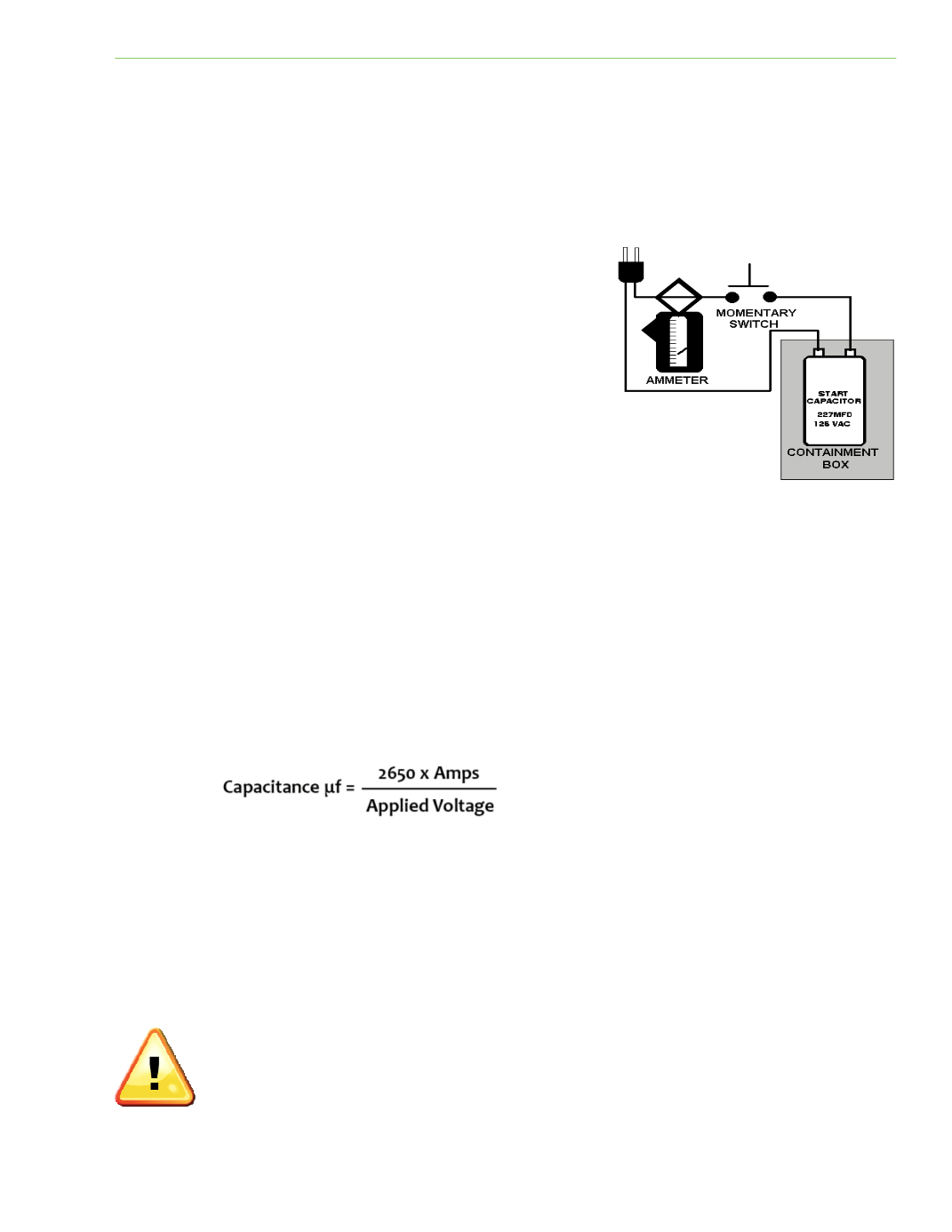

Electrical Theory & Applications for HVACR
Chapter 6: Troubleshooting
Page 119
Some capacitors are fiƩed with a bleed resistor. The resistor bleeds off the charge each Ɵme the
circuit is de‐energized. The bleed resistor must be carefully removed before conƟnuing with tesƟng.
This ohmmeter test is valid in diagnosing open or shorted capacitors; these are definitely bad.
However, because a capacitor passes the ohmmeter test, you cannot guarantee the capacitance
raƟng.
When checking a dual run capacitor, connect one meter lead
to the center terminal (common) and the other lead to either
herm. or fan and analyze the results for each. The leads
between either terminal and the metal case of a run capacitor
should show an infinite reading.
Once the capacitor has been safely discharged, connect the
leads to each terminal of the capacitor allowing Ɵme for the
meter to analyze the results. Faulty capacitors can be open,
shorted, or have improper microfarad (mfd) raƟngs. A good
run capacitor raƟng should be the same as indicated on the
label.
To maintain motor efficiency, always replace a weak run
capacitor. Start capacitors usually have a range for the raƟng. Some motor manufacturers
recommend a replacement start capacitor be within plus or minus 10 percent of the listed raƟng.
Always use what is recommended by the manufacturer.
If you do not have a capacitor tester, you can measure and calculate the capacitance in microfarads
(μf) by using an ammeter, a voltmeter, and a test cord, as shown in Figure 6‐19.
Calculate the capacity by using the formula:
Place the start capacitor in a containment box before energizing. In the event of a failure, a start
capacitor can overheat and expel flaming material. Before connecƟng the test cord, perform the
ohmmeter test. If the capacitor is shorted, do not proceed with this test!
Before connecƟng power to the capacitor, measure the voltage supply used for the test and record
the measurement to be used in the calculaƟon.
Close the momentary switch for three seconds and record the current flowing into the capacitor.
IMPORTANT: Do not energize a start capacitor for more than three seconds.
Fig. 6‐19: TesƟng a start capacitor










